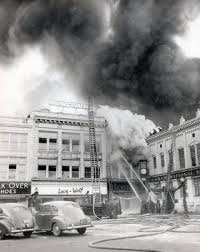Historical Notes: Chapter Six
The Offices of the Springfield Leader
The Springfield Leader
The Springfield Leader, established in 1867, was the dominant newspaper in Springfield, Missouri during the late 19th century. By 1897, when Mack visits its offices in this chapter, the Leader had been serving the Queen City of the Ozarks for thirty years.
The newspaper began as a weekly publication on April 4, 1867, founded by O.S. Fahnstock & Co., and quickly grew to become a daily paper. Throughout the 1880s and 1890s, the Leader chronicled Springfield's transformation from a post-Civil War town into a thriving commercial center, covering everything from railroad expansion to local politics to the social life of the growing city.
The Leader would continue publication well into the 20th century. In 1933, it merged with the Springfield Daily News (which didn't exist until 1927) to form the Springfield Leader & Press and the News & Leader. The combined papers occupied a building on Boonville Avenue.
In 1947, disaster struck when fire destroyed the newspaper plant. The image below may depict this devastating fire or a similar fire at the newspaper building. Despite the destruction, with help from local printing firms, a four-page newspaper hit the streets within hours. For several months while the plant was rebuilt, the newspaper was actually published in Tulsa, Oklahoma and trucked back to Springfield—a testament to the dedication of keeping the community informed.

Today's Springfield News-Leader traces its lineage directly back to that original Springfield Leader of 1867, making it one of Missouri's most enduring journalistic institutions.
Author's Note
In Chapter Six, I've tried to capture the bustling atmosphere of a late 19th-century newspaper office—the controlled chaos, the clash of personalities, and the sense of being at the center of the community's information flow. The "PARTS" sign and printing press components reflect the mechanical nature of newspaper production in 1897, when everything was still set in hot type and printed on massive presses.
M.S. Glenn, the angry newspaper editor Mack encounters, represents the kind of colorful characters who populated newspaper offices of the era—educated enough to quote Shakespeare, bitter enough to cause trouble, and just drunk enough at midday to make a scene.